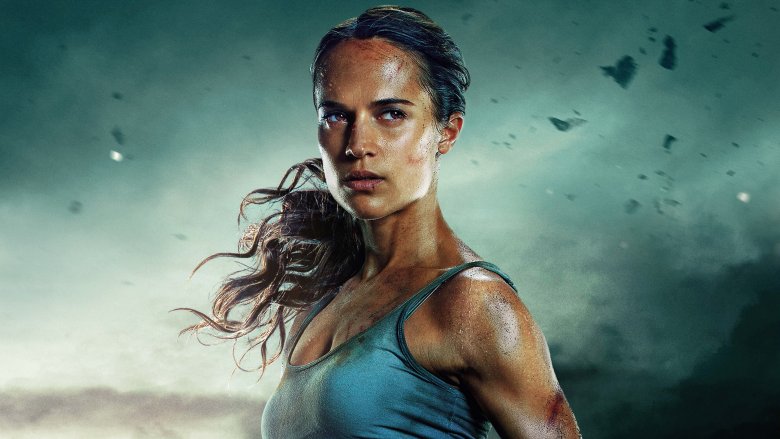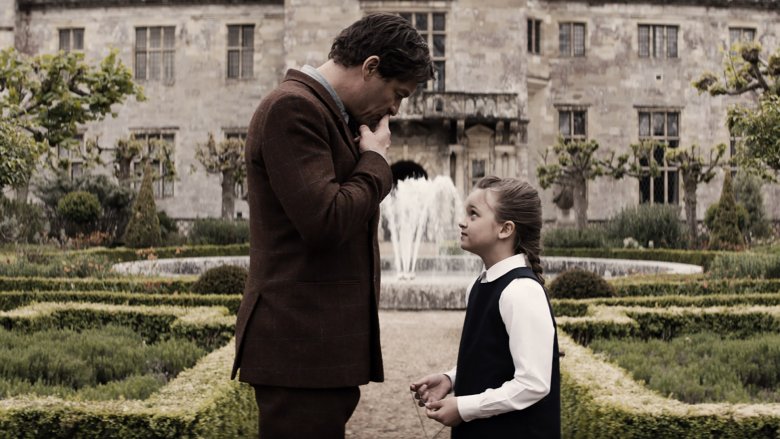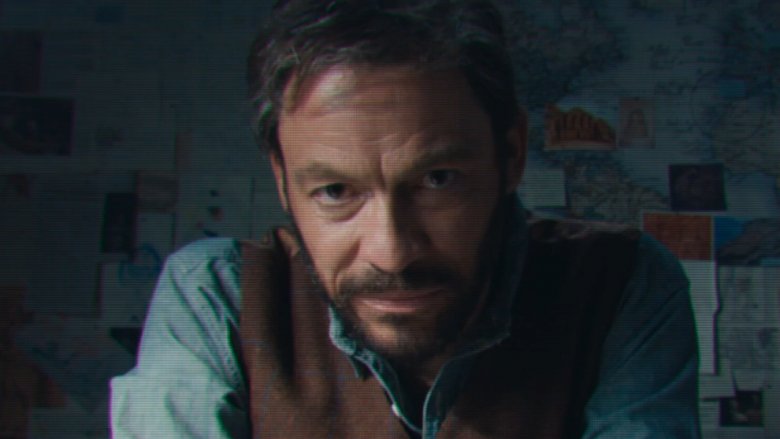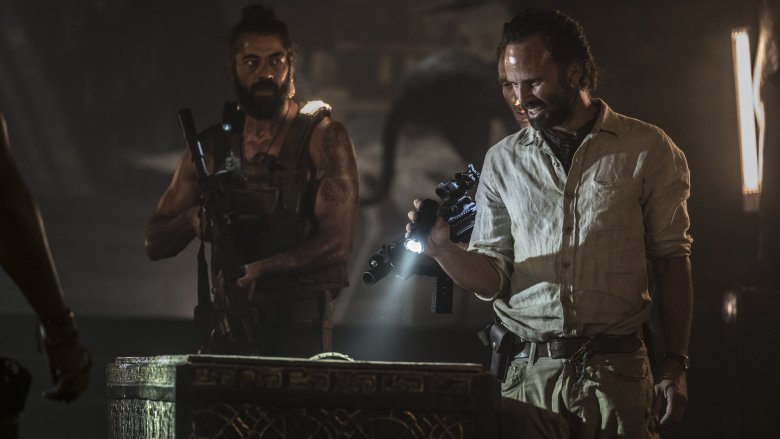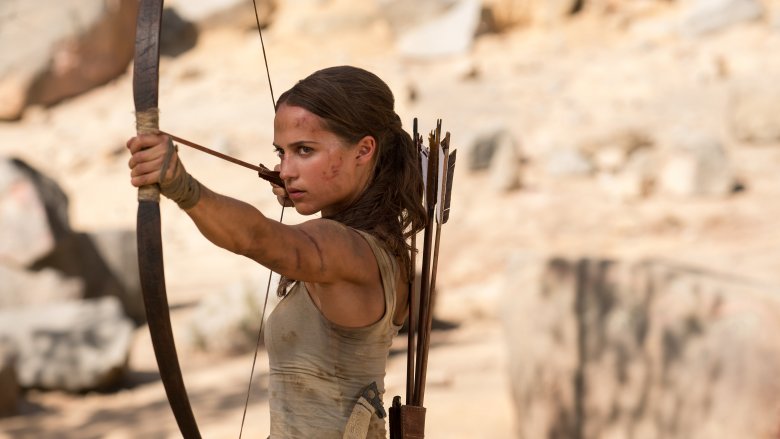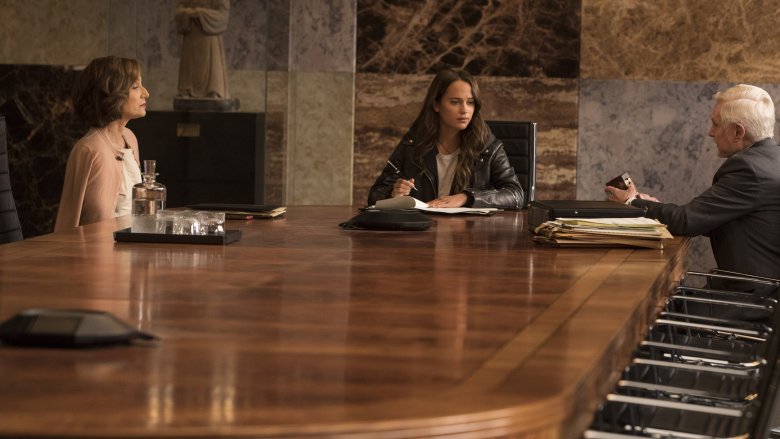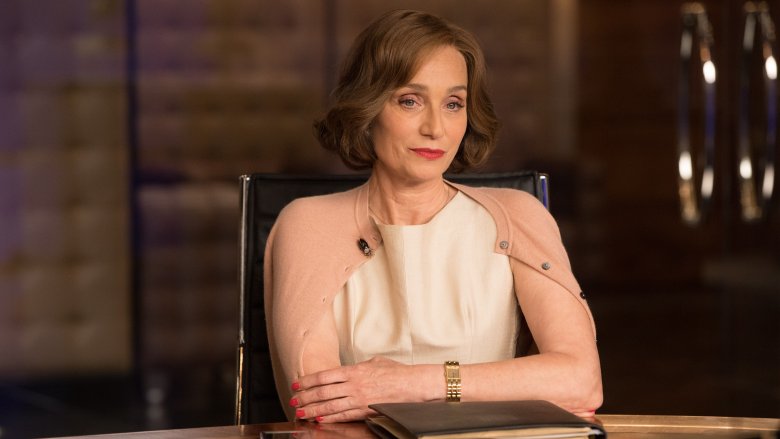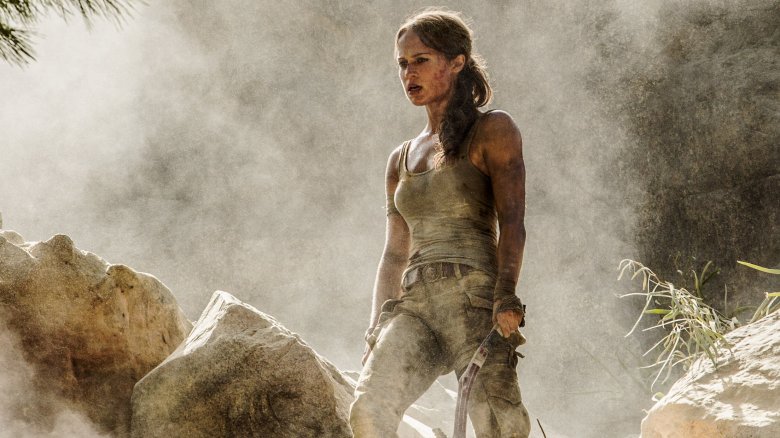Tomb Raider's Ending Explained
It's been nearly two decades since Angelina Jolie played Tomb Raider protagonist Lara Croft on the big screen. The lackluster performance of 2003's Lara Croft Tomb Raider: The Cradle of Life looked like the end of the franchise — but then Square Enix's 2013 video game reboot happened. With Tomb Raider, and the 2015 sequel Rise of the Tomb Raider, new life was injected into the beloved property. Just three years later, a brand new Lara Croft movie has hit theaters, setting out to tell the Tomb Raider story for a new generation of film fans. With Oscar-winning Alicia Vikander in the starring role, it feels like a new franchise may be on the horizon.
What makes this Tomb Raider different? For one, Square Enix had major input on the movie — with many of the plot points mirroring the video game reboot's story. The Roar Uthaug-directed film also works as an origin story for Lara Croft, showing audiences who she was before battling island foes and raiding ominous crypts. That's not to say, of course, that Lara's story doesn't intertwine with familiar villains from the video game franchise. Their presence is strong, informing Lara's journey from mild-mannered bike messenger to tomb raiding hero. But how exactly does it all come together? Let's break down the events that help close 2018's Tomb Raider reboot. Here's Tomb Raider's ending explained.
Lara's daddy issues
Lord Richard Croft's (Dominic West) appearance in Tomb Raider works on multiple levels. Not only is his character a mystery, which is revealed in flashbacks, the absence of Lara Croft's father informs who she is. Instead of following in his footsteps, Lara does her best to forge her own path away from her family's estate. But once she's called in to sign her father's absentia paperwork and take over the Croft business, she discovers a bigger puzzle worth solving — and that her father may still be alive.
"She never really knew what happened, so she hasn't been able to mourn him," Alicia Vikander told Nerdist. With the help of clues he left behind — and Richard's office hidden in the Croft crypt — Lara heads to an island called Yamatai. In the process, she not only finds the closure she'd been seeking all these years, but her father's explorer curiosity is awakened within her. While the father/daughter storyline helps to give context to the Croft family backstory, the plot device puts Lara Croft's own legacy into perspective, acting as a solid foundation to the hero she eventually becomes.
Mathias Vogel's motives
The story of Mathias Vogel (Walton Goggins) differs a bit from the 2013 Tomb Raider game. The circumstances in which Vogel arrived to the island of Yamatai are a bit different here — Hybrid Network explains video game Vogel was shipwrecked in 1982 — and his motivations are morally grey. In the movie, Vogel is revealed as a henchman for Trinity. In the game, he has no connection to the evil corporate entity.
Driven insane by the three decades he spent on the island, video game Vogel came to believe that Himiko controlled the storms plaguing Yamatai, and that she was Yamatai's true ruler. He ended up believing the only way to escape was through murdering a descendant of the Sun Queen. This came in the form of Lara Croft's friend Samantha, replaced by Daniel Wu's Lu Ren in the movie, who both became shipwrecked on the island years later.
In the film, Goggins had only been trapped on the island for seven years, but it's long enough to drive him mad. "He's wasted his life and has missed his family, looking for this thing that Lara Croft's father had the coordinates for," Goggins explained via IGN. His one mission was to enter Queen Himiko's tomb. But his personal motivations were much simpler: to return to the wife and daughters he left behind. This emotional component to Vogel's story helps add an empathetic layer to the character. That's what makes him such a compelling and formidable villain.
The legend of Queen Himiko
The story of Queen Himiko, the Sun Queen, drives the story of the 2013 Tomb Raider video game as well as the 2018 film. However, while the Himiko legend is used as a supernatural factor that drives Vogel's murderous ways in the game — Yamatai's violent storms caused Lara Croft's shipwreck — the film introduces the Japanese myth as a mystery that Lord Richard Croft was investigating when he disappeared. Lara's hunt for her father not only brings her to Yamatai, it puts her face-to-face with Vogel, who views her arrival as his ticket home. All she has to do is open the tomb, something Vogel's team hasn't been able to do for seven years.
In the game, the legend of Himiko found her immortal soul trapped in the burnt carcass of Hoshi — a young girl whose body was to be a new vessel for Himiko. Hoshi ended up sacrificing herself, trapping the Sun Queen's soul inside her dying body. In the film, however, Himiko's story took a different turn. The film's big reveal posits that the Sun Queen was the carrier of a deadly zombie virus, and quarantined herself away in the tomb in order to keep her people safe and ultimately save the world from an undead plague.
Lord Richard Croft's sacrifice
Reuniting with her archeologist father on Yamatai is a huge moment for Lara. The discovery that Richard Croft is alive supplies Lara the sense of closure she's been yearning for. This reveal also reveals a history between Richard and Vogel — both seeking to unlock the supernatural mysteries hidden within Himiko's tomb. In the 2013 game and its sequel, Croft appears to Lara in cutscenes, which provide a narrative component to the game, filling in the blanks regarding Lara's backstory while also pushing the plot forward. His appearance in the 2018 Tomb Raider film achieves the same thing, while also acting as a catalyst that completes Lara's hero transformation.
To pass the adventurer torch to his daughter, Lord Richard Croft needs to die. Once inside Himiko's tomb, Lara and her father fight to keep Himiko's body inside the building, but they can't stop the virus contained within the Sun Queen's DNA from infecting Mathias' henchmen. While Vogel is able to take a piece of the body with him as he makes his escape, Richard isn't so lucky. After a scuffle with one of Vogel's men, Lara's father becomes infected with Himiko's zombie virus. After saying a tearful goodbye to Lara, Richard sets off an explosive to sacrifice himself. In the process, he destroys Himiko's tomb, keeping her infected remains from reaching the rest of the world and saving humanity as we know it.
Trinity's motives
When we meet him, Mathias Vogel is consumed by the mission that has trapped him on the island. Seven years stranded, put there by Trinity to extract Queen Himiko's remains from a seemingly impenetrable tomb, his ticket home arrives in the form of Lara Croft. She soon proves herself harder to kill than Vogel expected. Leveraging her father's life finally pushes Lara to do his bidding, and once Himiko's tomb is opened, the motivations of Vogel's employer come into focus.
The mysterious organization known as The Order of Trinity was briefly referenced in the 2013 video game, but Rise of the Tomb Raider painted it as one epically nefarious group. We get a hint of their plans in the film's third act. Once Lara and her father realize Queen Himiko's DNA contains a deadly disease — one that transforms people into ravenous zombie-like beasts — they reach the conclusion that Trinity aimed to use the virus as a world-ending weapon.
Their goals of global domination end up being thwarted, though, thanks to Richard's sacrifice. But this sinister plot point offers just a glimpse of what Trinity is and the lengths they're willing to go to in order to gain ultimate power. It's a safe bet they'll be a bigger threat if a Tomb Raider sequel is put into motion.
Lara's heroic transformation
When audiences are introduced to Lara Croft in the film, the notion that this 21-year-old woman will soon be traversing rough terrain while dodging bullets and murderous henchmen seems ludicrous. Once Croft finds her way to Yamatai, the heroic pieces to the puzzle begin to fall into place. At Tomb Raider's halfway point, Lara is attacked by one of Vogel's goons, and the fight that ensues results in Lara's first kill. The emotional weight of this act is an important turning point in Lara's journey, and she's met with a similar challenge during the movie's climax.
As Mathias Vogel attempts his escape from Himiko's tomb, Lara is hot on his trail. Vogel has the dead Queen's decrepit finger in tow — enough to please his Trinity bosses. Thankfully, Lara stops him. This confrontation leads to a fight that's even more savage than her previous attack. With the tomb collapsing around them, Lara taps into her rage and takes things up a notch — shoving Himiko's finger into Vogel's mouth before kicking him off the cliff to the pit of zombified cadavers below. This scene, followed immediately by her leap over the precipice — utilizing her signature climbing axe to scale the tomb wall ahead — acts as the final step in her transition. The visual of her climbing from the rubble emotionally exhausted, yet triumphant, succeeds at nailing this point home.
Keeping the Croft dream alive
After their heartfelt reunion and world-saving adventure, Lara returns to her father's company. This time, she signs the paperwork, taking on the responsibility of running the family business. It's a big step, and one that confirms Lara's newfound confidence as both an archeological adventurer and a confident woman to be reckoned with. Gone is the reckless bicycle messenger we saw just two hours prior.
With her father's employees Mr. Yaffe (Derek Jacobi) and Ana Miller (Kristen Scott Thomas) at the table with her, it seems that Lara has enough support to make this move. But, at its heart, Tomb Raider is a story filled with mysterious hints that lead to dark secrets. As congratulations are handed out, and Ana walks to the elevator, Croft begins piecing together clues she found strewn about her father's secret bunker. Mathias Vogel may have been dealt with, but he was just a cog in a bigger machine. And there's something about Ana's behavior that doesn't feel right to Lara. It's not the nature of a Croft to ignore a hunch, which leads us to believe this tease will be explored in greater detail in the next installment of the franchise.
Just the tip of the Trinity iceberg
Who exactly is The Order of Trinity and what do they want? Those questions are never really answered during Tomb Raider, but hints of a bigger mystery are sprinkled throughout the story. In the film's final moments, when Lara signs that paperwork, a closer connection to the organization is alluded to. There's something off about Ana Miller.
Presented as a confidant to Richard Croft, and a loyal employee of Croft Holdings, it seems that Ana may actually have ties to Trinity. Earlier in the movie, she urges Lara to keep her father's archeological dream alive. Could there be ulterior motives at play here? If Miller is connected to the big bad Trinity, the story in the next film will hopefully follow the subject matter featured in 2015's Rise of the Tomb Raider. In the game, Miller is not only revealed as Richard Croft's confidant, but also his former lover. As you may expect, she has deep ties to Trinity in the game's story — and ends up being the one tasked with assassinating Lara's father.
The rise of the Tomb Raider
After her harrowing journey — her trip through the Devil's Sea, the battle with Mathias Vogel's men, avoiding the many Indiana Jones-style traps laid within Queen Himiko's tomb, to name a few — Lara accepts the archeologist mantle and finds herself back inside her father's secret bunker. There, we see her perusing Richard Croft's folders and paperwork, reading up on the overreaching power and influence the Order of the Trinity wields. It's clear she's embraced her calling. She's now ready to continue the adventures her father started while she was just a child. But before she can go on her next mission, Lara realizes she needs the appropriate gear.
Taking a trip back to the pawn shop she hit earlier in the film to fund her trip to Yamatai, Lara flirts with Max (Nick Croft), the counter person whose brief appearance in the film adds some welcome levity. And right before the credits roll, we see that this shop's well-stocked in the weaponry department. It's quite possible Max and his wife Pamela (Jaime Winstone) will equipping Lara with the tools she needs to face her next adventure. And with that, the moment video game fans have been waiting hours to see arrives: Lara Croft, finally holding her signature dual pistols in her hands. Tomb Raider's ending makes it clear that the action's only just begun.
